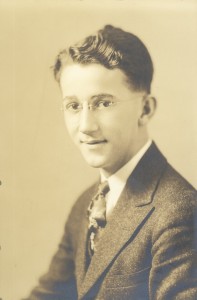Stroke: It’s time to face up to the horrendous cost
 May is stroke awareness month. It’s a time to raise our awareness of the horrendous consequences of stroke and what we can do to reduce them.
May is stroke awareness month. It’s a time to raise our awareness of the horrendous consequences of stroke and what we can do to reduce them.
Most days, I don’t like to think about stroke and what it cost me. I’d rather get on with my life and focus on what I can still do–be a wife, daughter, sister, grandmother, friend. Speak. Read. Write. Drive. Travel to still-wild places.
Ten years on, I still fight the deficits from my stroke every day–a flighty disorganization, memory like a sieve, a discoordinated hand with almost no feeling–but I lead a full and interesting life. Most people say they have no idea I’ve had a stroke. I hide it well.
Most stroke survivors aren’t nearly so lucky.
The Cost
It’s easy to get lost in statistics:
- Almost 800,000 strokes each year in the US and nearly 140,000 deaths
- Stroke is the No. 4 cause of death in the US, behind heart disease (with which it is closely linked) cancer, and respiratory disease .
- Stroke is one of the top causes of disability among adults in the US.
- More than five million Americans are living with the effects of stroke.
But what does this really mean?
More than twenty-five percent of stroke victims die within a year of their first stroke. Fifteen percent die within a few days or weeks. That was O.W., my uncle (by marriage), a husband, father, and brilliant mathematician. He died within a week of suffering a devastating hemorrhagic stroke. Multiply his story by 187,000.
Ten percent of stroke victims require care in a nursing home or other long-term care facility. There are 80,000 of those each year.
Forty percent of stroke victims are so impaired that they require special care. That was another uncle, of my husband’s. Jim, an avid reader, was blinded by his stroke. His wife went from new bride to caregiver in a short time. That’s also my friend, Gerry, a high tech marketing and product manager until his stroke forced his retirement. Now, he stays home, unable to drive, while his wife works. Multiply their stories by 300,000 each year.
Twenty-five percent of stroke victims recover with minor impairments. That’s me. Lucky with only “minor” deficits, but I am still one of the seventy percent unable to return to their previous jobs. I can’t figure out the tip on a restaurant bill or sew on a button. Multiply my story about 187,000 every year.
A still luckier lucky ten percent of stroke victims recover almost completely after their strokes. I haven’t met any of those yet, but there are 80,000 each year.
A single year’s stroke victims could populate a city the size of San Francisco. But wait: it would need a much larger population to accommodate all the caregivers.
A city of stroke survivors–five million of us–would be the second largest city in the US, behind only New York.
Think about it and do all you can to stop stroke.
Next: What you can do.





